As an owner of a Can-Am Defender, I understand the importance of having a reliable and trouble-free off-road vehicle. However, like any mechanical equipment, the Can-Am Defender may experience some problems over time. In this blog post, I will discuss 12 common can-am defender problems that its owners face and also provide the solutions that are easy to understand, even for non-technical individuals.
12 Major Can Am Defender problems
The most common problems with can am defender are starting issues, turf mode issues, light problems, brake issues, cab temperature issues, clutch issues, PTO issues, electrical issues, loss of power and fuel system issues.
1. Starting Problems with Can-Am Defender
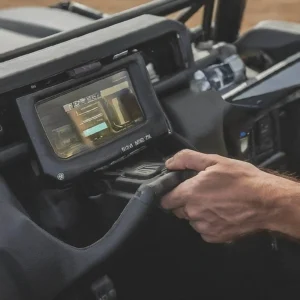
Here are several causes behind the starting issues with your UTV. Also explore the problems with Can-Am Defender HD7.
I. Battery Issues
One of the most common reasons for starting problems in a Can-Am Defender is a faulty or discharged battery. A weak battery can prevent the engine from starting or cause it to crank slowly. To diagnose this issue, you can check the voltage of your battery using a multimeter. A healthy battery should have a voltage reading of around 12.6 volts.
If your battery is low on charge, you can try jump-starting your Can-Am Defender using jumper cables and a second vehicle with a fully charged battery. Once the engine is running, allow it to idle for a few minutes to recharge the battery. If the battery continues to have issues, it may need to be replaced.
II. Fuel System Problems
Another common cause of starting problems in a Can-Am Defender is issues with the fuel system. If the engine is not receiving an adequate fuel supply, it may struggle to start or fail to start altogether. To address this issue, you can check the fuel level in the tank and ensure that it is not empty.
If the fuel level is sufficient, you can inspect the fuel lines for any blockages or leaks. A clogged fuel filter can also cause starting problems, so it may need to be replaced. Additionally, old or contaminated fuel can affect engine performance, so consider draining the fuel tank and refilling it with fresh fuel.
III. Ignition System Faults
Faulty ignition components can also contribute to starting problems in a Can-Am Defender. The ignition switch, spark plugs, and ignition coil are all critical components that need to be in good working condition for the engine to start properly.
If you suspect an issue with the ignition system, you can start by checking the ignition switch for any signs of damage or wear.
Check the spark plugs and replace them if needed. Additionally, the ignition coil should be tested to ensure that it is providing sufficient voltage to the spark plugs.
Also explore Can-am defender vs Polaris Ranger
2. Turf Mode

Turf mode is a feature in Can-Am Defenders that allows you to engage the rear differential to provide a smoother ride on delicate surfaces such as grass or turf. It helps to minimize damage to the ground and reduce tire slippage.
Common Problems with Turf Mode
- Turf Mode Engagement Failure: One of the most common issues with turf mode is when it fails to engage. You may notice that the rear wheels do not lock together, and the vehicle behaves as if turf mode is not activated.
- Turf Mode Disengagement Failure: Another problem you may encounter is the inability to disengage turf mode. Even after switching off the turf mode, the rear differential remains locked, causing difficulty in maneuvering the vehicle.
- Strange Noises: Some users have reported hearing strange noises when turf mode is engaged, such as grinding or clicking sounds. These noises can be concerning and may indicate an underlying issue.
Solutions to Turf Mode Problems
Turf Mode Engagement Failure: If you are experiencing issues with turf mode not engaging, try the following steps:
- Make sure that the vehicle is on a level surface before attempting to engage turf mode.
- Check the turf mode switch to make sure it is in the correct position.
- Look at the wiring connections to see if any wires are loose or damaged. If you find any issues, consult a qualified technician for repairs.
- If the above steps do not resolve the problem, it is recommended to contact your nearest Can-Am dealership for further assistance.
Turf Mode Disengagement Failure: If you are unable to disengage turf mode, follow these steps:
- Make sure that the vehicle is stationary and the engine is turned off before attempting to disengage turf mode.
- Check the turf mode switch to make sure it is in the correct position for disengagement.
- Check the wiring connections for any loose or damaged wires. If you find any issues, consult a qualified technician for repairs.
- If the rear differential remains locked even after following the above steps, it is advisable to seek assistance from a Can-Am dealership.
- Strange Noises: If you hear unusual noises when turf mode is engaged, try the following:
- Inspect the condition of the rear differential and the surrounding components for any signs of damage or wear.
- Check the fluid level in the rear differential. Low fluid levels can cause abnormal noises. If the fluid level is low, consult the owner’s manual for the correct type and amount of fluid to add.
- If the noises persist, it is recommended to have your vehicle inspected by a qualified technician to identify and resolve the issue.
Also explore the problems with Can-Am Defender Limited
3. Lighting Problems in Can-Am Defender
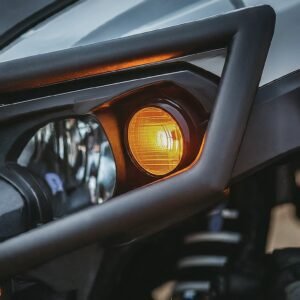
As an owner of a Can-Am Defender, I have experienced a few lighting problems that can be frustrating and inconvenient. Here I will discuss some of the most common lighting issues faced by Can-Am Defender owners and provide detailed solutions.
I. Headlight Malfunction
One of the most common lighting problems in Can-Am Defender is a headlight malfunction. This can be identified when the headlights fail to turn on or flicker intermittently. This issue can greatly affect your visibility, especially during night rides or in low-light conditions.
Solution: To fix this issue, you can start by checking the headlight bulbs. Make sure that they are securely connected and not damaged. If the bulbs are in good condition, the problem may lie in the wiring or the switch. In such cases, it is recommended to consult a professional technician who can diagnose and repair the electrical components of the headlight system.
II. Brake Light Failure
Another lighting problem that Can-Am Defender owners often encounter is brake light failure. This issue can be dangerous as it reduces the visibility of your vehicle to other drivers, especially when braking or slowing down.
Solution: Begin by checking the brake light bulbs to ensure they are not burnt out or loose. If the bulbs are in working condition, the problem may be with the brake light switch or the wiring. You can try replacing the brake light switch, which is typically located near the brake pedal. If the issue persists, it is advisable to seek assistance from a professional technician to diagnose and fix the underlying electrical problem.
III. Turn Signal Problems
Turn signal problems are also common in Can-Am Defender. These issues can include the turn signals not working at all, blinking too quickly, or staying on continuously.
Solution: Start by inspecting the turn signal bulbs to ensure they are not burnt out or loose. If the bulbs are in good condition, the problem may lie in the turn signal relay or the wiring. You can try replacing the turn signal relay, which is typically located near the fuse box. If the problem persists, it is recommended to consult a professional technician who can accurately diagnose and repair the turn signal system.
4. Cab Temperature Problems
Extreme temperatures can pose several challenges when it comes to the Can-Am Defender cab. In hot weather, the cab can quickly become unbearably hot, making it uncomfortable and even unsafe to spend extended periods of time inside. On the other hand, in cold weather, the lack of insulation and proper heating can make the cab feel like an icebox, making it difficult to stay warm and enjoy your ride.
These temperature problems can be particularly troublesome for non-technical individuals who may not be familiar with the inner workings of the Can-Am Defender. However, there are practical solutions that can help alleviate these issues and ensure a more comfortable experience.
Solutions for Hot Weather
When it comes to combating the heat inside the Can-Am Defender cab, there are a few simple solutions that can make a big difference:
- Window Tinting: Applying window tinting film to the windows can help block out a significant amount of heat from the sun, keeping the cab cooler.
- Roof Insulation: Installing insulation on the roof can help reduce the amount of heat that enters the cab from above.
- Use Sunshades: Placing sunshades on the windshield and side windows when the vehicle is not in use can help prevent the cab from heating up excessively.
By implementing these simple solutions, you can significantly improve the comfort level inside the Can-Am Defender cab, even during the hottest summer days.
Solutions for Cold Weather
When it comes to staying warm in the Can-Am Defender cab during cold weather, there are a few key solutions that can make a noticeable difference:
- Cab Heater: Installing a cab heater can provide a consistent source of warmth inside the cab, making it much more comfortable, especially during long rides.
- Insulated Doors: Adding insulation to the doors can help prevent cold air from seeping into the cab, keeping the interior warmer.
- Sealing Gaps: Identifying and sealing any gaps or openings in the cab can help prevent cold drafts from entering.
By implementing these solutions, you can ensure a more enjoyable experience in your Can-Am Defender, even in the coldest of weather conditions.
5. Clutch Problems
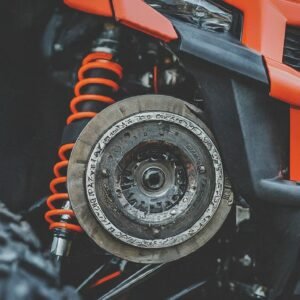
Here are some clutch issues.
Common Clutch Problems
- Slipping Clutch: One of the most common issues with the Can-Am Defender’s clutch is slippage. This occurs when the clutch fails to engage properly, resulting in a loss of power and acceleration. It can be caused by worn clutch plates or a loose clutch cable.
- Clutch Drag: Another problem that can occur is clutch drag, where the clutch does not fully disengage when the lever is pulled. This can make it difficult to shift gears smoothly and can cause grinding noises.
- Clutch Noise: Some owners have reported hearing unusual noises coming from their Can-Am Defender’s clutch. This can range from squealing or grinding sounds to rattling or clunking noises.
Solutions
- Slipping Clutch: If you are experiencing a slipping clutch, the first step is to check the clutch cable tension. Adjust it according to the manufacturer’s specifications. If the clutch cable is properly adjusted and the problem persists, it may be necessary to replace the clutch plates. Consult your local Can-Am dealer or a qualified mechanic for assistance.
- Clutch Drag: To address clutch drag, start by checking the clutch lever free play. Adjust it to the recommended specifications if necessary. If the clutch lever free play is correct and the problem persists, it may be due to a worn clutch cable or clutch springs. Again, it is advisable to seek professional help for a proper diagnosis and repair.
- Clutch Noise: Unusual noises coming from the clutch can be indicative of various issues. If you hear a squealing or grinding noise, it could be due to worn clutch plates or a damaged clutch basket. Rattling or clunking noises may indicate loose clutch components. In either case, it is best to have the clutch inspected and repaired by a qualified technician.
6. Can-Am Defender Brake Problems
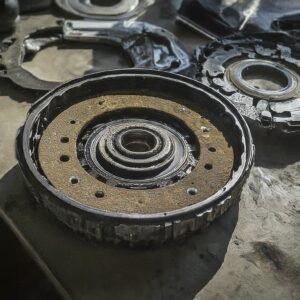
As an owner of a Can-Am Defender, you may have encountered some issues with your brakes. Here we will discuss common brake problems that Can-Am Defender owners face.
I. Brake Noise
One of the most common brake problems in Can-Am Defenders is brake noise. You may hear squeaking, grinding, or squealing sounds when applying the brakes. This can be caused by worn-out brake pads, loose brake components, or the accumulation of debris between the brake pads and rotor.
To solve this issue, you can start by inspecting the brake pads for wear. If they are worn out, it is recommended to replace them. Additionally, check for any loose brake components and tighten them if necessary. Cleaning the brake pads and rotor to remove any debris can also help eliminate brake noise.
II. Brake Fluid Leaks
Another common issue with Can-Am Defender brakes is brake fluid leaks. Leaks can occur due to damaged brake lines, seals, or calipers. Brake fluid leaks can lead to a loss of braking power and should be addressed promptly.
If you notice a brake fluid leak, it is essential to identify the source. Inspect the brake lines, seals, and calipers for any signs of damage or leakage. If you find any damaged components, they should be replaced. It is also important to check the brake fluid level regularly and top it up if needed.
III. Brake Fade
Brake fade is a phenomenon where the brakes lose their effectiveness, resulting in reduced stopping power. This can be particularly dangerous in situations that require sudden braking. Brake fade in Can-Am Defenders can be caused by overheating of the brake system.
To prevent brake fade, it is crucial to avoid excessive and prolonged braking. Give your brakes time to cool down between heavy braking instances. Upgrading to high-performance brake pads and rotors can also help improve heat dissipation and reduce the likelihood of brake fade.
IV. Soft Brake Pedal
If you notice that your Can-Am Defender’s brake pedal feels soft or spongy, it indicates a problem with the brake system. This can be caused by air bubbles in the brake lines or a worn-out master cylinder.
To resolve a soft brake pedal issue, you can start by bleeding the brake system to remove any air bubbles. This can be done by following the manufacturer’s instructions or seeking assistance from a professional. If bleeding the brakes does not solve the problem, it may be necessary to replace the master cylinder.
7. PTO Problems
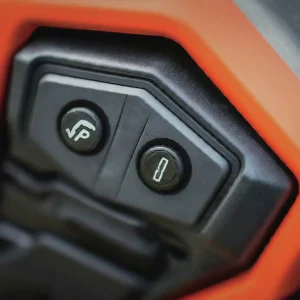
As an owner of a Can-Am Defender, I understand the frustration that can arise when encountering problems with the Power Take-Off (PTO) system. The PTO is a crucial component of the vehicle, responsible for transferring power from the engine to various attachments or implements, such as a snowplow or a mower.
While the Can-Am Defender is known for its durability and reliability, there are a few common PTO problems that some owners may experience. It’s important to be aware of these issues and understand their potential causes in order to find the appropriate solutions.
I. PTO Engagement Issues
One of the most common problems with the PTO system in Can-Am Defenders is difficulty in engaging or disengaging the PTO. You may find that the PTO lever or switch is stiff or unresponsive, making it challenging to activate or deactivate the PTO.
This issue can be caused by a few different factors, such as a faulty PTO switch, a worn-out PTO clutch, or a misaligned PTO linkage. To address this problem, it’s recommended to start by checking the PTO switch for any visible damage or signs of wear. If the switch appears to be in good condition, the next step is to inspect the PTO clutch and linkage for any signs of damage or misalignment.
If you’re not familiar with the mechanical components of your Can-Am Defender, it’s best to consult a qualified technician who can diagnose and repair the issue for you.
II. PTO Shaft Vibrations
Another common problem that Can-Am Defender owners may encounter is excessive vibrations coming from the PTO shaft. These vibrations can be felt throughout the vehicle and can be quite unsettling, especially during operation.
The main cause of PTO shaft vibrations is an imbalance in the driveshaft or the PTO attachment. This imbalance can occur due to a bent or damaged driveshaft, a misaligned PTO attachment, or worn-out universal joints.
To address this issue, it’s important to first inspect the driveshaft for any visible signs of damage or bending. If the driveshaft appears to be in good condition, the next step is to check the PTO attachment for any misalignment. It’s also recommended to inspect the universal joints for any signs of wear or damage.
If you’re unsure about how to inspect or repair these components, it’s advisable to seek assistance from a knowledgeable technician who can help diagnose and resolve the issue.
III. PTO Overheating
PTO overheating is another problem that Can-Am Defender owners may encounter. This issue typically occurs when the PTO is engaged for extended periods of time or when excessive load is applied to the PTO system.
Overheating can cause damage to the PTO clutch, seals, and other internal components. It’s important to address this issue promptly to prevent further damage and ensure the longevity of the PTO system.
To prevent PTO overheating, it’s recommended to periodically check the PTO fluid level and make sure it is within the manufacturer’s recommended range. Additionally, avoid engaging the PTO for extended periods of time without giving it breaks to cool down.
If you notice any signs of overheating, such as a burning smell or abnormal noise coming from the PTO system, it’s important to stop using the PTO immediately and allow it to cool down. If the problem persists, it’s best to consult a qualified technician who can diagnose and repair the issue.
8. Electrical Problems
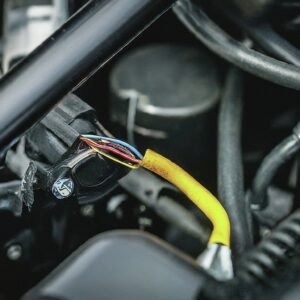
Here are some causes behind the electric issues.
I. Battery Drainage
One of the most common electrical problems in Can-Am Defenders is battery drainage. This occurs when the battery loses its charge even when the vehicle is not in use. There could be several reasons for this, such as a faulty ignition switch, a parasitic draw, or a malfunctioning electrical component.
To diagnose and fix this issue, follow these steps:
- Start by checking the battery voltage with a multimeter. A fully charged battery should read around 12.6 volts. If the voltage is significantly lower, it may need to be recharged or replaced.
- If the battery voltage is normal, proceed to check for any parasitic draws. This can be done by disconnecting one electrical component at a time and observing if the battery drain stops. If it does, the last disconnected component may be the culprit.
- Inspect the ignition switch for any signs of wear or damage. A faulty ignition switch can cause the battery to drain even when the vehicle is turned off. If necessary, replace the ignition switch.
- If none of the above steps solve the problem, it’s recommended to consult a professional mechanic who specializes in Can-Am Defenders.
II. Faulty Wiring
Another common electrical problem in Can-Am Defenders is faulty wiring. This can lead to various issues, including intermittent power loss, malfunctioning lights, and non-responsive electrical components.
To address this problem, consider the following steps:
- Look over the wiring harness for any signs of damage, like frayed wires or loose connections. If any issues are found, repair or replace the affected wiring.
- Use a multimeter to check if the wiring has continuity. This can reveal any breaks or shorts in the circuit. Repair or replace any faulty wiring as necessary.
- Make sure all electrical connections are tight and clean, without any corrosion. Clean the terminals and use dielectric grease to stop corrosion in the future.
- If the wiring problem persists, it’s advisable to seek assistance from a professional technician who is familiar with Can-Am Defenders.
III. Dim or Flickering Lights
Dim or flickering lights are another electrical issue that Can-Am Defender owners may encounter. This can be caused by a variety of factors, such as a weak battery, loose connections, or a faulty voltage regulator.
To resolve this problem, follow these steps:
- Check the battery voltage to make sure that it is within the manufacturer’s recommended range.
- If the battery is low on power, either charge it or get a new one.
- Inspect all connections related to the lights, including the bulbs, sockets, and wiring. Secure any loose connections and swap out any parts that aren’t working properly.
- If the issue persists, test the voltage regulator using a multimeter. A faulty voltage regulator can cause inconsistent power supply to the lights. If necessary, replace the voltage regulator.
- If none of the above steps solve the problem, it’s best to consult a qualified technician for further diagnosis and repair.
By following these troubleshooting steps, you can effectively address some of the most common electrical problems in Can-Am Defenders.
9. Poor Acceleration Problems
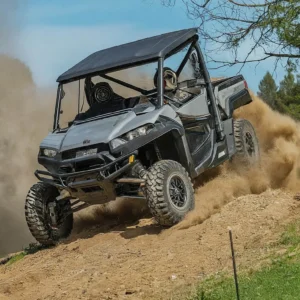
There can be several reasons why your Can-Am Defender is experiencing poor acceleration. Let’s explore some of the common causes:
I. Fuel System Issues
The fuel system plays a crucial role in the acceleration of your vehicle. If there are any problems with the fuel pump, fuel filter, or fuel injectors, it can lead to poor acceleration.
Clogged fuel injectors or a dirty fuel filter can restrict the flow of fuel, resulting in sluggish performance. It is essential to regularly maintain and clean your fuel system to ensure optimal performance.
II. Ignition System Problems
The ignition system is responsible for igniting the fuel-air mixture in the engine cylinders. If there are any issues with the spark plugs, ignition coils, or ignition timing, it can affect the acceleration of your Can-Am Defender.
Worn-out spark plugs or faulty ignition coils can cause misfires, leading to decreased power and poor acceleration. Regularly inspecting and replacing these components can help resolve ignition system problems.
III. Transmission Troubles
The transmission system is crucial for transferring power from the engine to the wheels. If there are any issues with the transmission, such as low fluid levels, worn-out clutch plates, or a malfunctioning torque converter, it can result in poor acceleration.
Regularly checking and maintaining the transmission fluid levels and promptly addressing any transmission-related issues can help improve acceleration.
Solutions for Poor Acceleration
Now that we have identified some of the common causes of poor acceleration in Can-Am Defender, let’s discuss the solutions:
I. Regular Maintenance
Proper and regular maintenance is crucial for optimal performance. Ensure that you follow the recommended maintenance schedule provided by Can-Am for your Defender. Regularly check and replace the air filter, fuel filter, spark plugs, and transmission fluid as per the manufacturer’s guidelines. This will help prevent potential issues that can lead to poor acceleration.
II. Fuel System Cleaning
Periodically cleaning the fuel system can help remove any deposits or contaminants that may be affecting the fuel flow. You can use fuel system cleaners available in the market or consult a professional to perform a thorough cleaning. This will ensure that the fuel injectors and fuel filter are free from any obstructions, leading to improved acceleration.
III. Ignition System Inspection
Regularly inspecting the ignition system components, such as spark plugs and ignition coils, can help identify any worn-out or faulty parts. If you notice any signs of damage or wear, replace them promptly. Additionally, ensuring proper ignition timing can also contribute to better acceleration. Consulting a professional mechanic can help you with the inspection and replacement process.
IV. Transmission Maintenance
Maintaining the transmission system is essential for smooth acceleration. Regularly check the transmission fluid levels and top up if necessary. If you notice any leaks or unusual noises, it is advisable to consult a professional for a thorough inspection. Timely addressing any transmission issues can prevent further damage.
10. Suspension Problems
When driving the Can-Am Defender on rough terrain or over obstacles, the suspension tends to bottom out easily, causing a harsh and uncomfortable ride. This can be particularly problematic for those who use the vehicle for work or recreational purposes, as it can lead to reduced productivity and an overall unpleasant experience.
So, what exactly causes these suspension problems in the Can-Am Defender? There are several factors at play:
I. Insufficient Suspension Travel
The Can-Am Defender is equipped with a suspension system that has limited travel, which means it has a limited range of motion to absorb impacts. This lack of travel can result in the suspension reaching its maximum compression or extension too quickly, causing it to bottom out.
II. Inadequate Damping
The damping system in the Can-Am Defender is responsible for controlling the movement of the suspension and absorbing shocks. However, many users have reported that the damping in the stock suspension setup is not sufficient to handle rough terrain effectively. This might cause a rough and uncomfortable driving experience.
III. Lack of Adjustability
Another issue with the Can-Am Defender’s suspension is the lack of adjustability. The stock suspension setup does not offer much flexibility in terms of tuning the suspension to suit different driving conditions or preferences. This can be frustrating for users who want to optimize their vehicle’s performance for specific off-road situations.
Now that we have identified the main problems with the Can-Am Defender’s suspension, let’s discuss some possible solutions:
I. Upgrading the Suspension Components
One of the most effective ways to improve the suspension performance of the Can-Am Defender is to upgrade its components. This can include installing aftermarket shocks, springs, and sway bars that are specifically designed for off-road use. These upgraded components can provide better damping, increased suspension travel, and improved adjustability, resulting in a smoother and more comfortable ride.
II. Adjusting the Suspension Settings
If you are not ready to invest in aftermarket suspension components, you can still make some adjustments to the stock suspension settings to improve its performance. This can involve adjusting the preload, compression, and rebound settings to find the right balance between comfort and off-road capability. However, it is important to note that these adjustments should be done carefully and within the recommended limits to avoid causing further damage to the suspension system.
III. Regular Maintenance and Inspection
Proper maintenance and regular inspection of the suspension system are crucial to ensure its optimal performance. This includes checking for any signs of wear or damage, lubricating the moving parts, and replacing worn-out components as needed. By keeping the suspension system in good condition, you can minimize the risk of encountering suspension problems and prolong the lifespan of your Can-Am Defender.
11. Loss of Power
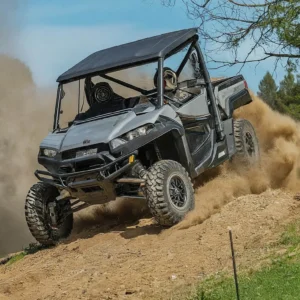
There are several factors that can contribute to a loss of power in a Can-Am Defender. It is important to identify the root cause in order to find an effective solution. Here are some common causes:
I. Fuel System Issues
A clogged fuel filter or a faulty fuel pump can restrict the flow of fuel to the engine, resulting in a loss of power. It is advisable to check the fuel system regularly and replace any worn-out or damaged components.
II. Air Intake Problems
Air is essential for combustion in the engine. If there is a restriction in the air intake system, such as a dirty air filter or a blocked air intake, it can lead to a decrease in power output. Regularly check and clean the air filter to make sure the engine gets enough airflow.
III. Ignition System Malfunction
The ignition system’s job is to ignite the fuel-air mixture in the engine. If there is a problem with the ignition system, such as a faulty spark plug or ignition coil, it can result in misfires and a loss of power. Regularly check and replace worn-out spark plugs and ignition components.
Solutions to Loss of Power Problems
Now that we have identified some common causes of loss of power, let’s discuss the solutions:
I. Fuel System Solutions
- Follow the manufacturer’s recommendation and change the fuel filter regularly.
- Check the fuel pump for any signs of damage or malfunction. If needed, get it fixed or replaced by a skilled technician.
II. Air Intake Solutions
- Check the air filter often and clean or change it when necessary. A clean air filter makes sure the engine gets the right airflow.
- Check the air intake for any obstructions or blockages. Remove any debris or foreign objects that may be restricting the airflow.
III. Ignition System Solutions
- Check the spark plugs frequently for any signs of wear or damage. Replace them if necessary, following the manufacturer’s recommendations.
- Inspect the ignition coils to spot any faults or failures. If a faulty ignition coil is identified, have it replaced by a qualified technician.
12. Fuel System Issues
Here are some problems related to the fuel system.
I. Fuel Contamination
Fuel contamination is a common issue that can occur in any vehicle, including the Can-Am Defender. Contaminants such as dirt, water, and debris can find their way into the fuel system, leading to clogged fuel filters and injectors. This might cause the engine to perform poorly and reduce fuel efficiency.
To prevent fuel contamination, it is essential to use clean and high-quality fuel. Regularly inspecting and replacing the fuel filter can also help prevent contaminants from entering the fuel system. Additionally, using fuel additives that clean the fuel system can help maintain its efficiency.
II. Fuel Pump Problems
The fuel pump is a vital component of the fuel system that delivers fuel from the tank to the engine. However, over time, the fuel pump can develop issues such as a weak fuel flow, noisy operation, or complete failure. These problems can lead to engine misfires, stalling, and difficulty starting the Can-Am Defender.
If you suspect a fuel pump problem, it is recommended to have it inspected and replaced by a qualified technician. Regular maintenance, such as cleaning the fuel pump and ensuring proper fuel pressure, can also help prevent fuel pump issues.
III. Fuel Leaks
Fuel leaks are not only hazardous but can also cause fuel system issues in the Can-Am Defender. Leaking fuel lines, connections, or fuel tanks can lead to a loss of fuel pressure and affect the engine’s performance. Additionally, fuel leaks pose a fire risk and should be addressed immediately.
If you notice a fuel smell or see fuel puddles under your Can-Am Defender, it is crucial to inspect the fuel system for leaks. Tightening loose connections, replacing damaged fuel lines, or repairing the fuel tank can help resolve fuel leak issues. However, it is recommended to have a professional technician handle fuel leak repairs for safety reasons.
Conclusion
By following this guide you can get rid of can am defender problems because here I provide the complete details about it. So whenever you face any problem with your am defender you can easily solve it.

